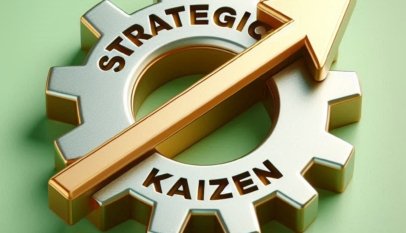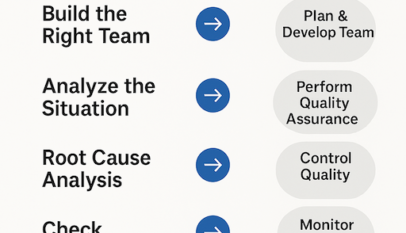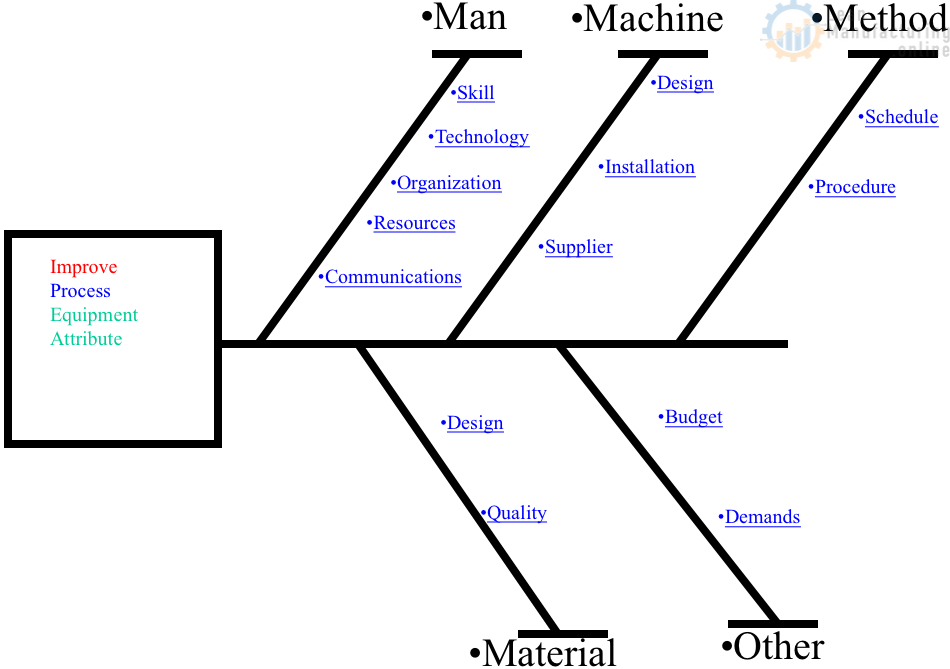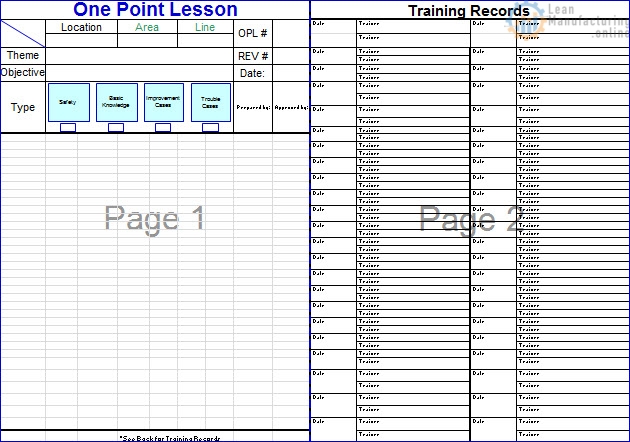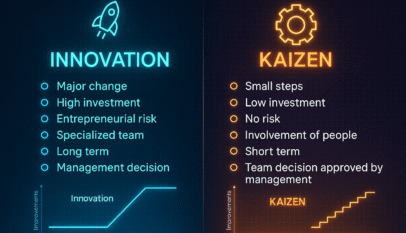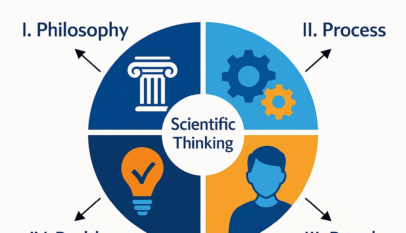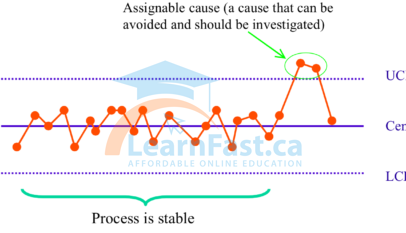
Senior leaders increasingly emphasize the need to strengthen competitiveness through successfully implemented strategies. In practice, organizations must:
- Improve managers’ ability to design and implement strategies, and
- Create a business operating system that facilitates strategy implementation to continuously enhance competitiveness.
Simply put, ongoing synergy between Business Strategy and Business Systems is crucial. That’s what Strategic KAIZEN does.
I. Opening
In the contemporary business landscape, the emphasis placed on strategic formulation is undeniable. Organisations dedicate substantial time and resources to the development of intricate strategies, reflecting the critical importance of strategic planning in achieving competitive advantage and long-term success. Despite this focus, however, it is challenging to assert that the majority of businesses effectively execute their strategies. The disparity between strategic formulation and implementation remains a pressing concern for many companies.
Senior executives frequently express dissatisfaction with conventional approaches to organisational improvement.
Comments from leadership often highlight the limitations of traditional practices, such as promoting incremental enhancements (or Improvement Focusing on Research – FR) within individual departments or through isolated delegations. Although these efforts are well-intentioned, their results have increasingly diminished in significance over time, leading to frustration among decision-makers.
Moreover, the nature of improvement activities themselves has often come under scrutiny. In many cases, such initiatives have evolved into objectives in their own right, rather than serving as means to achieve tangible operational and financial outcomes. This shift in focus has undermined their utility, prompting questions about their alignment with broader organisational goals.
Finally, leaders have raised concerns regarding outdated operational frameworks that continue to underpin their business activities. Despite the clear need for a transformative approach and the adoption of a new operating system, many organisations persist in relying on existing structures. This reluctance to embrace necessary changes represents a significant barrier to progress and exemplifies the challenges inherent in strategy execution.
II. The Role of Strategic KAIZEN: Today’s Current Challenges
Within this framework, Strategic KAIZEN plays a crucial role in advancing senior leaders’ competencies in both strategy design and implementation. It addresses and mitigates critical challenges that impede strategy execution. Such challenges include instances where managers lack a comprehensive understanding of the strategy, exhibit a mindset incompatible with active strategy implementation, or possess insufficient managerial competencies essential for effective execution. Additionally, the absence of a robust management system to achieve strategic objectives further exacerbates these difficulties. Strategic KAIZEN offers ways to approach these challenges in a practical and systematic way.
Simultaneously, Strategic KAIZEN focuses on redesigning business processes to create an optimised operating system aimed at reinforcing competitiveness. Through its methodologies, senior leaders are actively engaged in enhancing satisfaction among customers and all key stakeholders. Moreover, reactive and inefficient responses to the evolving needs of these stakeholders are transformed into proactive, preventive, and systematic strategic improvements. Strategic KAIZEN also fosters the development of holistic and organisation-wide improvement initiatives, thereby facilitating the gradual attainment of Takt Profit targets (the conversion of the Target Profit into TAKT PROFIT or profit per takt minute) and ensuring sustained organisational growth.
III. Strategic KAIZEN Approach: Strategy and System Synergy
Strategic KAIZEN represents the confluence of an organisation’s overarching business strategy with its operational frameworks. This methodology underscores the alignment of performance objectives—encompassing both financial and operational metrics, such as Quality, Cost, and Delivery (QCD)—with improvement objectives that are geared towards the continuous development of capabilities essential for strategy implementation.
Central to this alignment are the mechanisms of both TAKT PROFIT and the KAIZENshiro Budget, the latter being based on costs of non-productivity . These elements ensure a sustained and consistent linkage between performance targets and improvement goals, ultimately securing a competitive advantage and sustained profitability within the business sphere.
To achieve heightened competitiveness, it is essential for organisations to establish a clear and robust business strategy that is seamlessly integrated with their performance objectives. Concurrently, the business system must undergo a process of ongoing design and redesign through strategic enhancements, known as Strategic KAIZEN projects. These initiatives encompass a comprehensive review of internal processes and operations, which are instrumental in facilitating the successful implementation of the organisation’s strategic vision (see figure below).
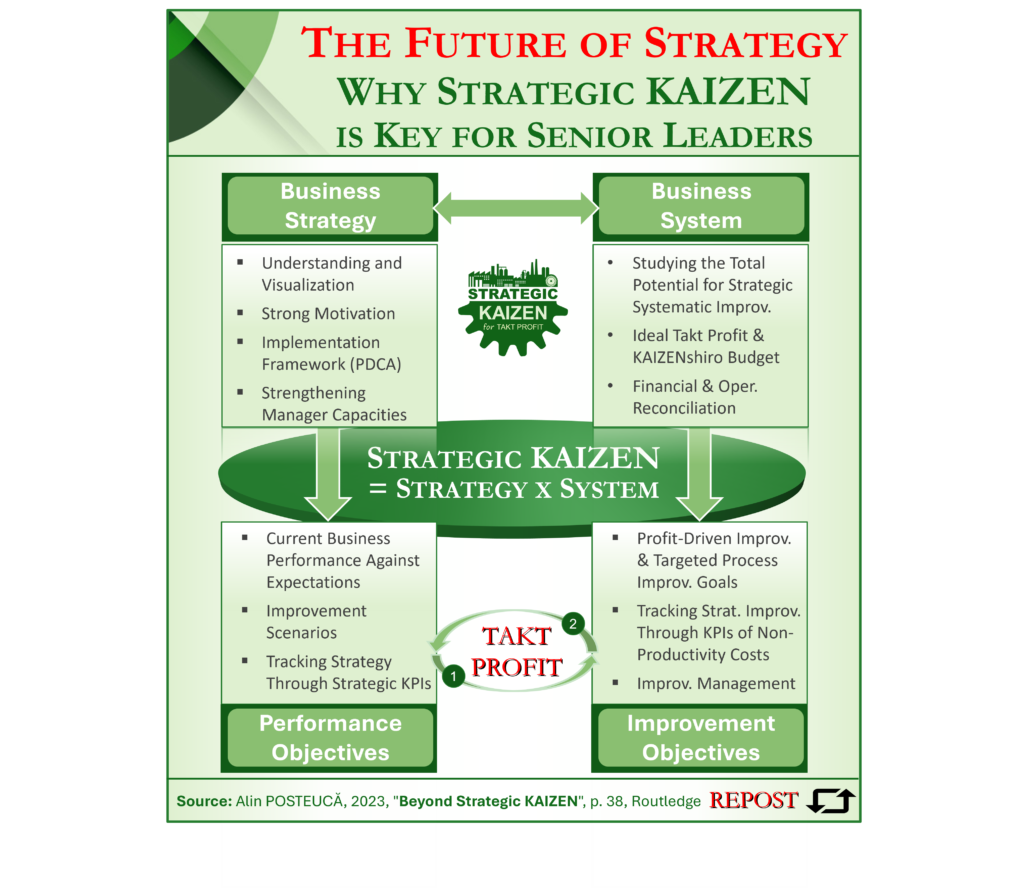
The cultivation of organisational competitiveness necessitates periodic and systematic strategic advancements within the business system.
Adopting a holistic, proactive, and preventive methodology, these enhancements serve as the cornerstone of Strategic KAIZEN projects, which may also be termed as Improvement Focusing on Design – FD (different from Traditional Kaizen which is Improvement Focusing on Research – FR). Such initiatives not only ensure the long-term viability of an organisation’s operations but also fortify its capacity to thrive amidst an increasingly competitive and dynamic business environment.
IV. KAIZENshiro Budget: Mastering Today’s Competitiveness
The KAIZENshiro Budget is an annual planning system designed to improve costs, operating independently of the financial accounting system. It is structured to be collaboratively managed by both the production and cost accounting departments. This system actively engages all managerial levels on an annual basis, with particular emphasis on senior leaders. Senior leaders are tasked with determining the level of Internal Profit achieved through the reduction of non-productivity costs, in addition to setting the annual level of External Profit derived from sales. These efforts collectively aim to secure the Annual Target Profit.
These costs of non-productivity are scientifically determined on a monthly basis, and future forecasts are systematically and continuously prepared for the subsequent 12 months.
This structured approach ensures that cost improvement goals are realistic, data-driven, and aligned with the organisation’s overall financial objectives. Through the active involvement of management at all levels, the KAIZENshiro Budget fosters a culture of efficiency and strategic planning.
V. Conclusion: Design Your Future-Ready Competitiveness
The successful implementation of Strategic KAIZEN necessitates the establishment of a robust management system, one that aligns with the aspirations and objectives of senior leadership. A cornerstone of this approach lies in cultivating the strategic improvement capabilities of middle managers and operational leaders. This development is achieved through the meticulous and comprehensive application of the seven methodological steps inherent to Strategic KAIZEN. When executed properly, these efforts are transformed into tangible and intangible business outcomes that meet- and often exceed – expectations.
Empirical evidence from business practices underscores that the strategic improvement capacity of middle managers constitutes a pivotal element of human resource development. It is indeed the linchpin of effective Strategic KAIZEN implementation. Recognising this critical factor, Strategic KAIZEN ensures organisational competitiveness by bridging strategies with actionable improvements, thereby nurturing a resilient and competitive business ecosystem.
In these times of relentless change and unpredictability, Strategic KAIZEN emerges not merely as a management tool, but as a vital philosophy to guide senior leaders in securing long-term organisational success. As the adage goes, “Change is inevitable, but growth is optional.” Strategic KAIZEN, however, gives leaders the tools to opt for growth and to do so with precision and purpose.
After all, why merely react to the tides of change, when one can learn to surf them instead?
Thank you for dedicating your valuable time to read this article. I genuinely hope it serves as a source of inspiration for your endeavours.
Dr. Alin Posteucă

